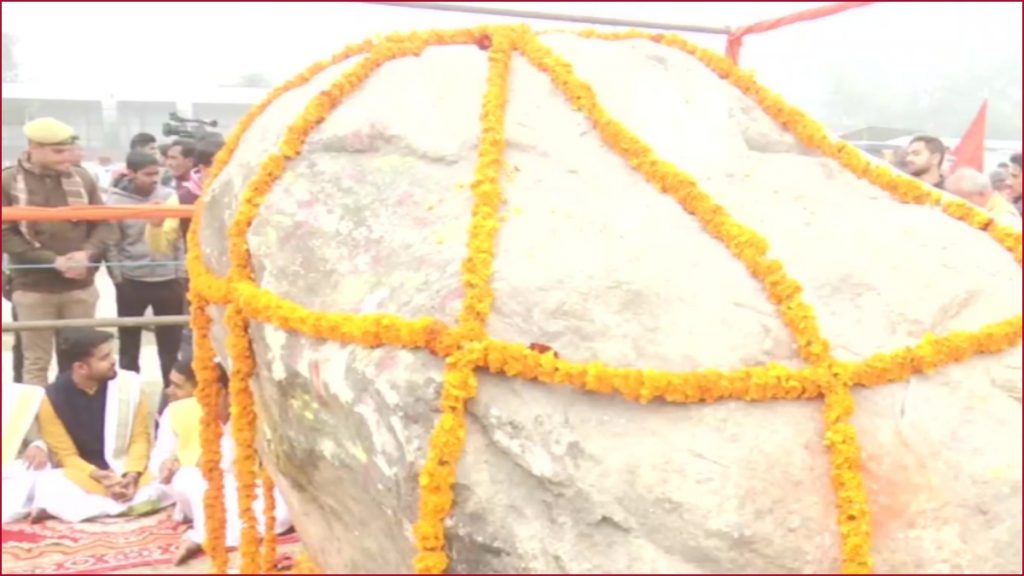Ayodhya (Uttar Pradesh): Two Shaligram (non-anthropomorphic representations of Lord Vishnu in the Hindu religion) stones today reached Uttar Pradesh’s Gorakhpur after it was dispatched from Nepal for the Ram Temple in Ayodhya.
What are Shaligram stones?
Shaligram stones are known as non-anthropomorphic representations of Lord Vishnu in the Hindu religion. Two shaligram stones were welcomed today at the Hindu god Lord Ram’s birthplace by Priests and locals. The stones were decorated with garlands and several rituals were performed before it was handed over to the Shri Ram Janmabhoomi Teerth Kshetra Trust.
According to reports, these boulders are expected to be used for the construction of idols of Ram and Janaki. It is said that it will be placed in the main temple complex of the under-construction Ram Mandir.
Shaligram stones are only found on the riverbanks of Kali Gandaki River that flows through Myagdi and Mustang districts.
These stones were brought on heavy-duty trucks from Nepal’s Janakpur, the birthplace of Sita.
The stones reached Uttar Pradesh’s Gorakhpur on Wednesday, where they were opened for devotees to offer prayers.
Shri Ram Janmabhoomi Teerth Kshetra, General Secretary, Champat Rai said these two boulders weigh around 30 tonnes and 14-15 tonnes.
To bring two boulders to India, Nepali Congress leader and former deputy prime minister Bimalendra Nidhi, who also hails from Janakpur, the birthplace of Sita, coordinated with the Janaki Temple to send the two stones from the Kali Gandaki River where Shaligrams are found in abundance.
The stones were technically and scientifically approved for the making of the idol, informed the Nepali officials.
The Shaligram Stone blocks from Nepal that will be used to sculpt the Murtis of Shri Ram and Seeta ji in Ayodhya #RamMandir pic.twitter.com/8HVXegNv73
— Shefali Vaidya. ?? (@ShefVaidya) January 29, 2023
WATCH

